Borobudur? Magnificent. Prambanan? Elegant. Plaosan? Mysterious.
The ancient Hindu and Buddhist temples of Java are still the biggest draw for most visitors to Jogja. Arguably the Javanese cultural capital, the city boasts some of the biggest and most elaborate ancient temples in Indonesia, and perhaps even the world. On my latest visit to the land which happens to be where my maternal ancestors are from, I made a detour from the major tourist trails.
Gudeg Yu Djum was the first place I visited. Nestled among other houses in a dense residential part of the city, a lot of cars were parked in an area where a single car could barely fit the narrow alleys. It is not surprising though why many people opt for this place to enjoy their gudeg. The traditional Javanese dish which is made from young jackfruit stewed with palm sugar and coconut milk and served with boiled egg – cooked with shallot, garlic, coriander seed, galangal, bay leaves, and teak leaves – and krecek – a dish made from cow’s skin, is ubiquitous in many corners of Jogja. However Gudeg Yu Djum was the most delicious that I have tasted by far.
When the day got hotter and the sun had already risen high above my head, I went to Taman Sari with Alexander and Detta to explore the former retreat of past Sultans. Located on the walkway to the entrance of the compound, a jamu vendor caught our attention for the rows of big glass bottles filled with brownish liquid. Jamu is a traditional Javanese herbal medicine which, according to some claims, dates back to more than 1300 years ago. One that I really like since I was little is jamu beras kencur, made from sand ginger and rice, which can unexpectedly be a fresh thirst quencher. My father himself who has type 2 diabetes still regularly consumes another variant of jamu which is made from mesoyi (a plant species closely related to cinnamon), ginger, cardamom and other ingredients.
Jogja might not be the first place which pops into most people’s minds when it comes to beaches. However we decided to go south, to the fabled southern Java beach of Parangtritis.
On our way, we couldn’t resist the urge to drop by another restaurant which can only be reached by private cars and motorbikes as no public transport goes through this rather remote part of Jogja. A plate of fried free-range chicken, a pod of fried stink bean, and a hefty dose of spicy sambal proved to be a simple lunch we really needed after exploring Taman Sari a few hours earlier.
“Do you want to have pecel Baywatch after this?” Alexander asked me.
“Does it come in big portions?” I wondered how much more food I could take right after the lunch. “But why is it called Baywatch?”
Apparently the owner, a very old woman called Mbah Warno, often wears a sleeveless and slightly revealing outfit to make her comfortable working in the kitchen in the hot and humid climate of Jogja. It was unclear who started to use the nickname, but today people know her pecel – boiled vegetables served with peanut sauce – as pecel Baywatch, after the famous TV series.
Only a few minutes from the place where we had lunch, Mbah Warno’s restaurant is actually her own modest house. Her assistant helped her in the kitchen, which was located outdoors with two wood-burning stoves. Later I found out that she had to move the kitchen outside her house after the 2006 earthquake which rattled Jogja and destroyed many buildings, including Mbah Warno’s kitchen.
After finishing the delicious fried eels and pecel, we continued the journey south with full stomachs.
One hour later, just before arriving at the beach, we made another detour to an area where an expanse of volcanic ashes created dark dunes. It was quite a surreal place and reminded me of the sea of sand at Bromo-Tengger-Semeru National Park. It turned out that this location had been used as the setting for various TV commercials.
On a small restaurant, a board was written with some information on the price for several things. Sewa kuda – literally horse for rent – was on the first line, providing a horseback ride for those who think the dunes are too tough to walk. Then something else caught my attention: sewa kambing – goat for rent. There is no way an adult or even a teenager can ride a goat because the poor animal would be too small. But then Alexander clarified that the goats are meant only for a photo op, not to be ridden.
Parangtitis Beach is not the most beautiful in Java, let alone Indonesia, but it has been an integral part of Javanese culture as some believe that it is where Nyi Roro Kidul (The Queen of the South Sea) resides. She is well-known for her mystical power and beauty which is said to have lured young men to go further into the sea and drown. In Pelabuhan Ratu, a small town in West Java, a hotel even dedicates a room only for her; one that can never be booked by other guests.
However there is another scene in Parangtitis which lures many men to come to this desolate part of Java. From the volcanic ash dunes to the beach, numerous small and dingy karaoke bars lined both sides of the road, each attended by at least one young woman who didn’t look anything like your typical girl next door.
“Prostitution is rampant here,” Alexander explained.
It was so sad to know that some people have to earn money in such a way due to their dire economic conditions. However the scene then changed into a vast expanse of blackish sand with beach bushes covering some parts of it. On the far side of the beach, a huge crowd flocked along a tiny strip of the beach where families and friends gathered to have good times of their own, despite the cloudy sky and rough waves.
A few minutes after strolling the more deserted part of the beach, we left the thundering sound of the merciless sea behind and prepared ourselves to go back to the city. A few horse-drawn carriages passed us by, filled with happy families while a few meters away some young women called the sleepy brothels their homes, awaiting the arrival of nightfall.
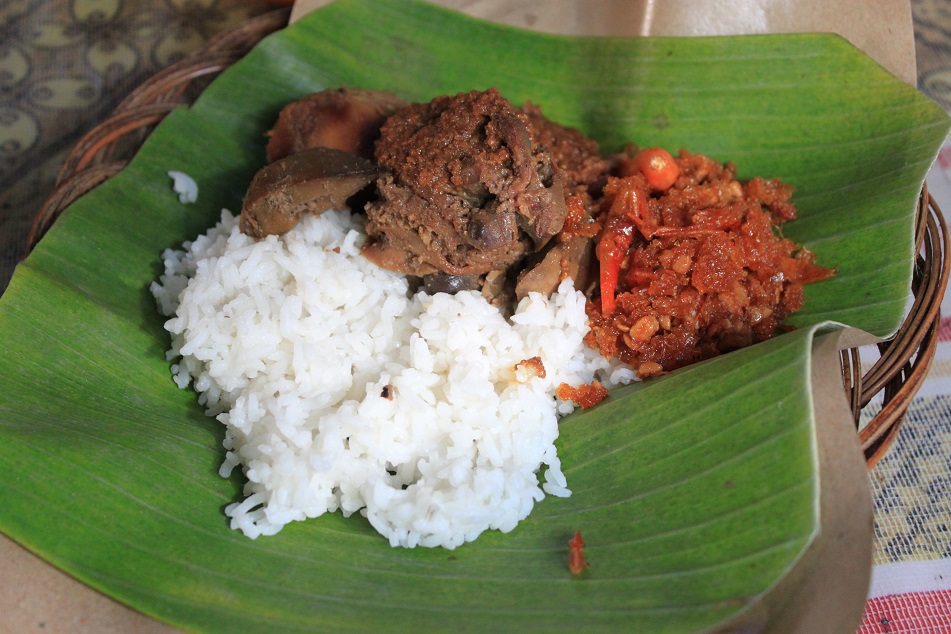
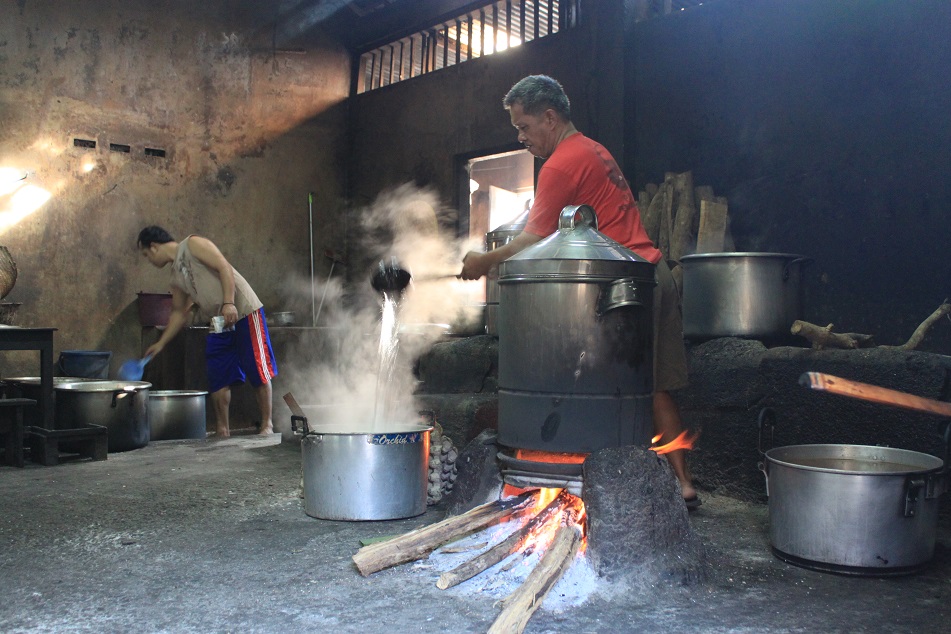

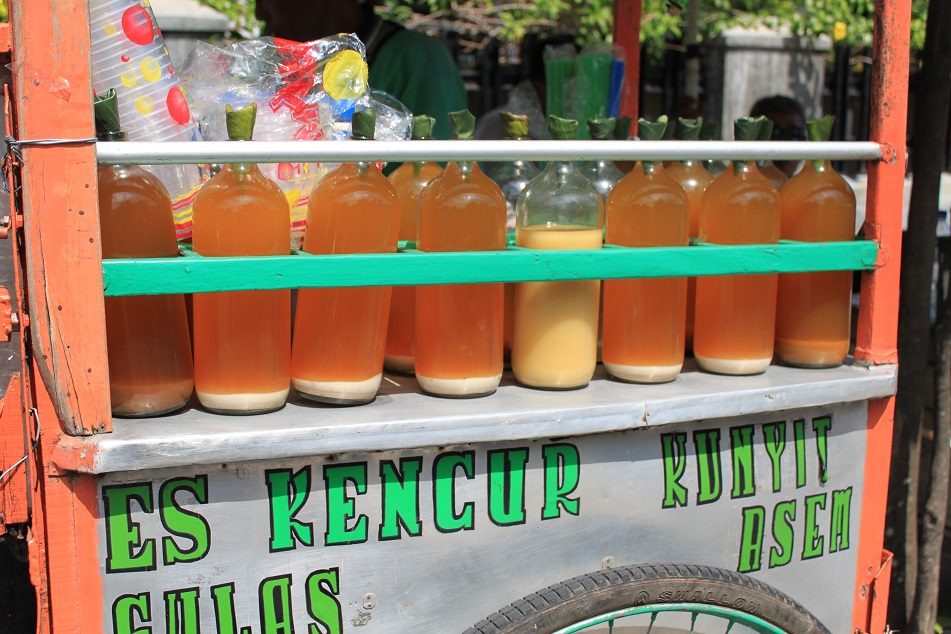
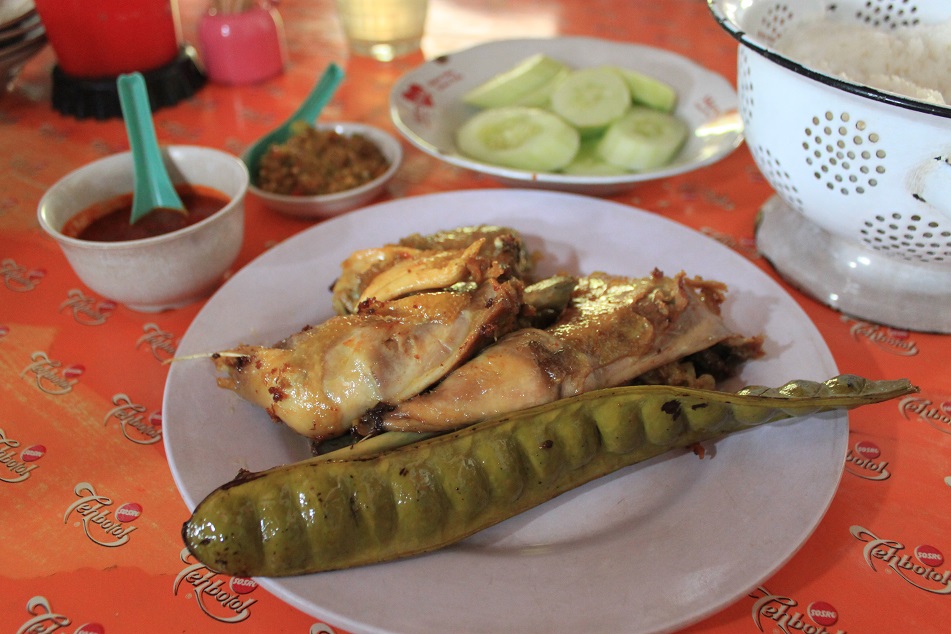
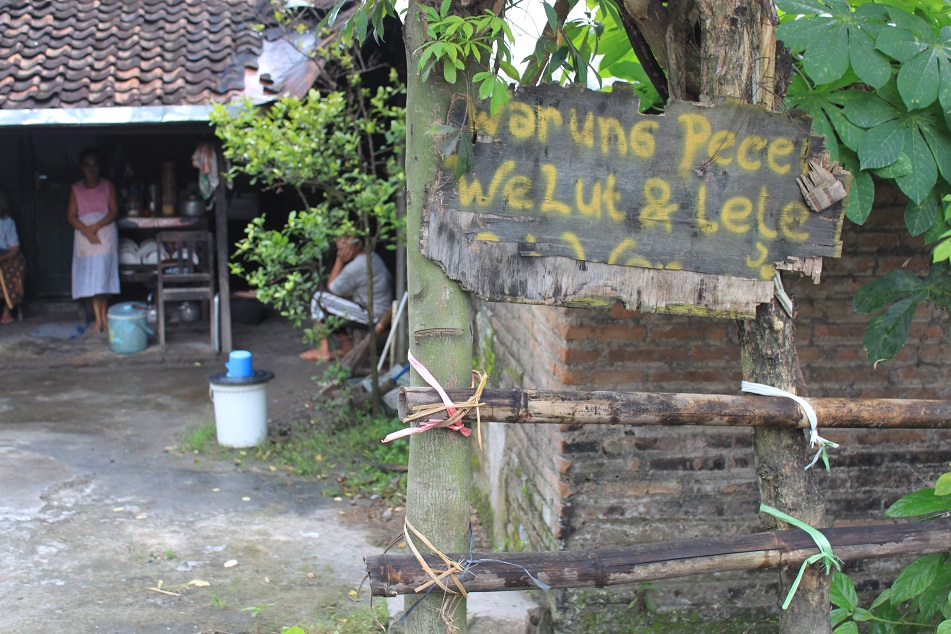
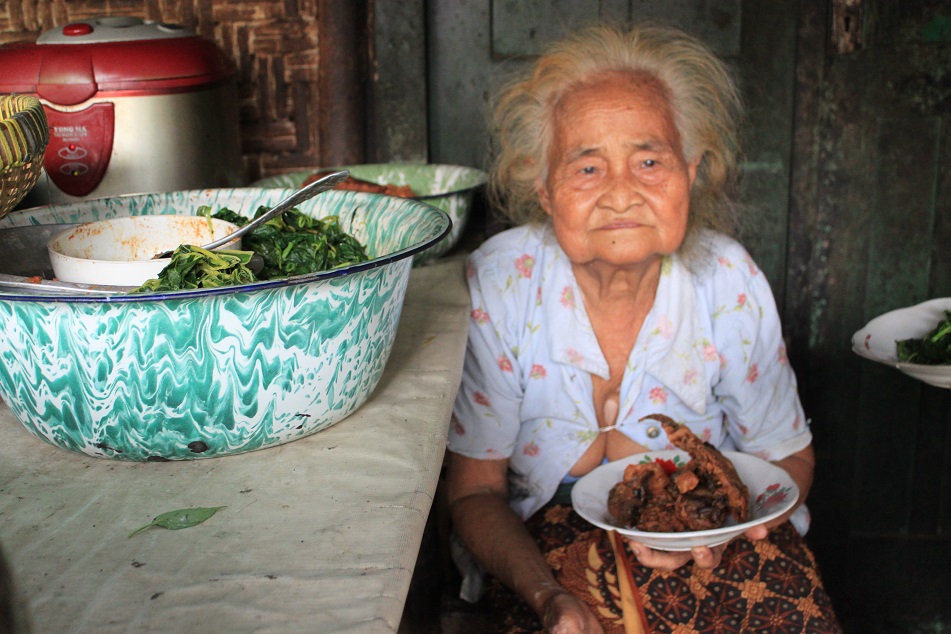
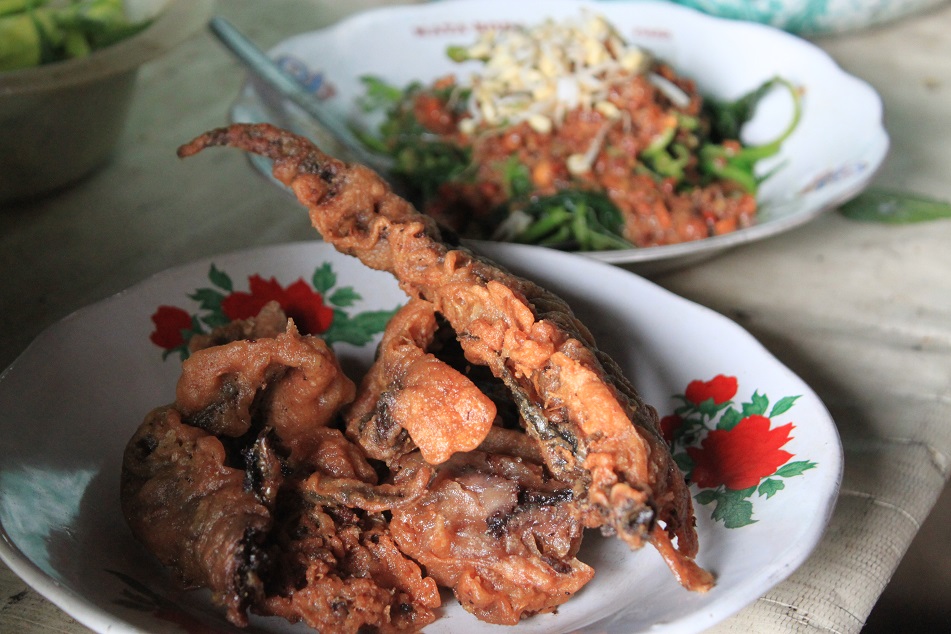
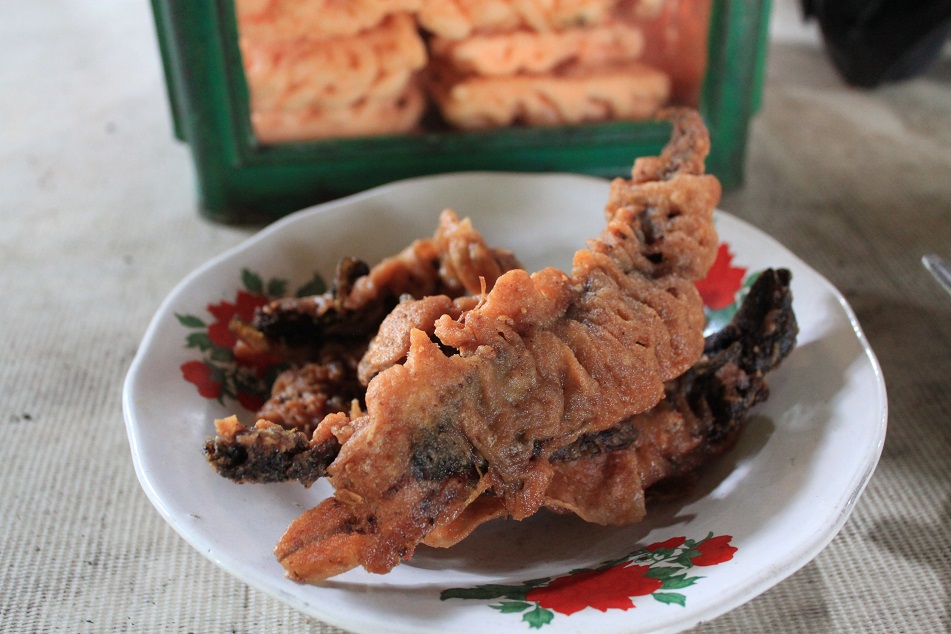
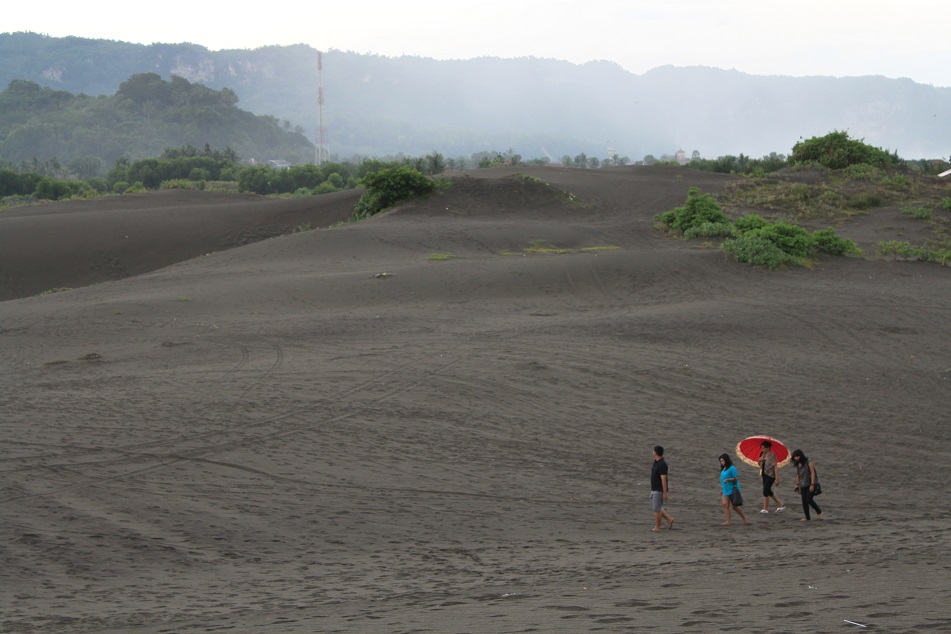
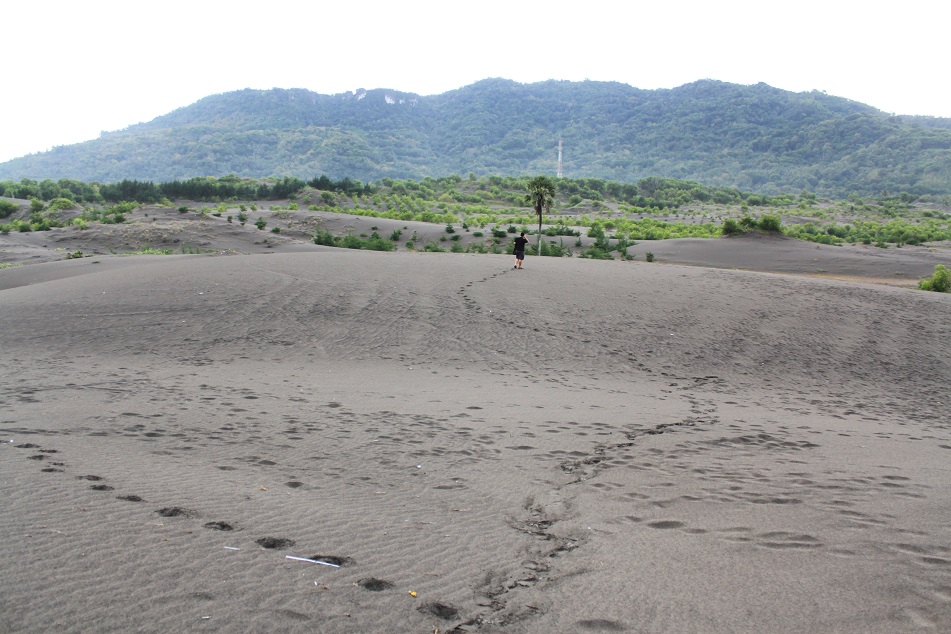

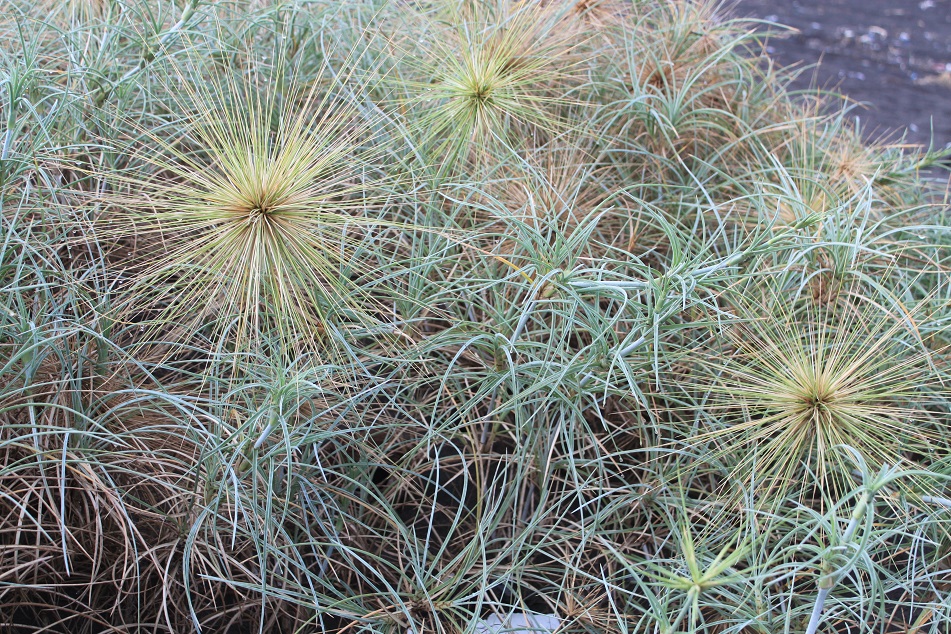
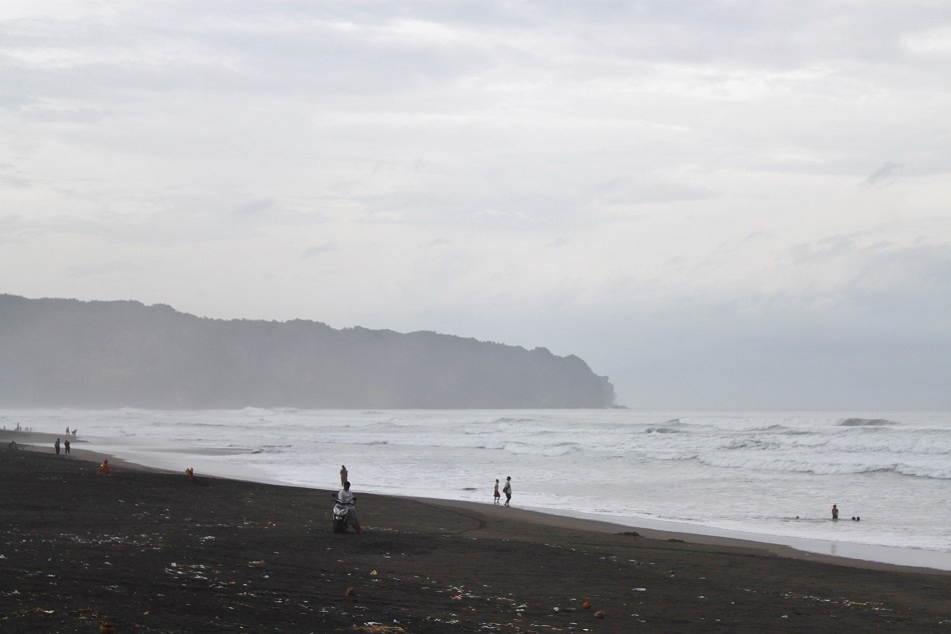
Pecel Baywatch… I’m laughing when I read its name…but I wonder why I never found this traditional food before. Bama, you must tell me where is Miss “Baywatch” Warno’s address please…. 😀
LikeLike
Yea, when I heard it for the first time I couldn’t believe my ears either. Actually since it was our driver who knew the place, I can’t tell tell for sure where that was. But it’s somewhere in Kasongan.
LikeLike
Bama, numpang disini… Kasongan luas juga kan… kira-kira tempatnya dong… hehehe… jogja is always my home.
LikeLike
Sudah dibantu sama commentnya mas Mawi Wijna di bawah ya. Semoga membantu dan thank you commentnya Mas Mawi!
LikeLike
arah ke warung pecel “Baywatch” mbah Warno kalau dari kota Jogja itu lebih enak menuju ke desa Wisata Kasongan, Bantul dulu di Jl. Bantul km 9. Di desa wisata Kasongan tanya arah ke Sendang Semanggi, nanti bakal ketemu pertigaan dekat masjid. Warungnya sekitar 50 meter dari pertigaan itu.
LikeLike
Makasih banyak infonya Mas Mawi. Bisa membantu yang lainnya juga karena ternyata cukup banyak yang tertarik untuk dateng ke sana. 🙂
LikeLike
Ah, pecel Baywatch! November nanti gue akan kesana sama anak2 kantor.
Namanya pecel baywatch karena si mbah2 yang jualan tuh sering cuma pakai kutang doang.. hihihi…
LikeLike
Iya, tadinya bingung kenapa namanya baywatch. Pas liat Mbah Warno nya langsung paham. 🙂
Enjoy your visit!
LikeLike
Bama, even on a full stomach, seeing these mouthwatering photos is tortuous – everything looks so delicious, especially the gudeg and pecel! I love how you got to visit the kitchen and see the gudeg chefs at work. And you’re right, the sand dunes of Parangtritis are somewhat reminiscent of Bromo. Thanks for sharing another great post! 🙂
LikeLike
When we go to Jogja one day, I’ll make sure you try that gudeg since I know how much you enjoyed the one we had in Jakarta. That and some other local dishes for sure! 🙂 Walking on the sand dunes actually reminded me of my first visit to Bromo during rainy season when the sea of sand looked really dark. I guess you would feel more like at Bromo than Jogja. 🙂 Thanks James!
LikeLike
Hari yang mengenyangkan, memang. Semua masuk dalam satu hari, supaya Bama bisa merasakan semuanya, tempat-tempat yang memang enak dan beberapa tidak banyak orang yang tahu.
Dan setiap kali bertemu Mbah Warno selalu menjadi moment terdiam, bukan karena (maaf) kutang neneknya, tapi karena beliau masih terus giat bekerja di usianya dengan punggung yang sudah begitu membungkuknya. Mbah Warno juga selalu menambahkan porsi bumbu pecel yang dibeli buat dibawa pulang. Pesannya, “dinikmati sama ibu di rumah ya…”.
LikeLike
Yes, dan makasih banget ya Bapake udah mblusuk-mblusuk ngajak ke tempat-tempat itu. Masih inget rasa pecelnya yang memang enak banget. DAn waktu lihat dapurnya yang di depan itu tadinya kepikiran itu karena memang sengaja dibuat seperti itu, tapi ternyata karena dapur aslinya kena gempa. 😦 ANyway, masih inget uka bahagia campur bingung mereka waktu Bapake ninggalin extra buat mereka.
LikeLike
Sssst….halah…, masalah tinggalan kuwi ora pantes diomongke.
They are good people with good heart Bama. Dan kebahagiaan mereka begitu sejati dalam kesederhanaannya. Kalau ada kesempatan ke daerah kuwi maneh, ojo lali sowan ke mbah Warno yo Mas.
LikeLike
Tak apa Bapak! 🙂 Pasti tak sempetin ke sana lagi kalo pas lagi di daerah itu.
LikeLike
Maybe it’s called “Pecel Baywatch” because Mbah Warno is so sexy like a baywatch girl. I mean, look at her boobs #eh #salahfokus
Anyway, kalau mas cari pantai yang kece jebret di Jogja, I highly recommend you Kawasan Pantai Pegunungan Karst Gunung Kidul: Pantai Indrayanti, Pok Tunggal, Sundak, Baron, Goa Watulawang, Sepanjang, Ngobaran, Ngrenehan, all those beautiful white sand beaches at one area. Matur nuwun sampun kersa dhateng Jogja 🙂
LikeLike
Thank you so much untuk rekomendasi pantai-pantainya. Saya lupa-lupa inget pernah ke Pantai Baron atau belum. Seinget saya pantai di Jogja kalo siang-siang mataharinya semelet. 🙂 Mungkin saya harus datengnya lebih pagian atau justru menjelang sore. Matur nuwun juga sampun mampir ke blog saya.
LikeLike
ahh!! semua aku suka
LikeLike
Sama! Thanks for dropping by Haya!
LikeLike
I really enjoyed the pictures you’ve included! Being able to see the woman behind baywatch :]
LikeLike
Thanks Krystal! Yes, that’s her. 🙂 Her dishes were all delicious!
LikeLike
pecel Baywatch… gue kira yg ngelyanain mirip2 pamela anderson
LikeLike
Hehe, ngarep. 😛 Tapi makanannya enak kok. Jadi tetep worth visiting lah.
LikeLike
great story! I’m going to head over to Joja in a couple months and, although I’m a sucker for temples, I will definitely keep this post in mind.
LikeLike
Thanks Andrea! I guess it’s really impossible to visit Jogja without seeing the temples, especially Borobudur even though it’s technically located in another province. But at least you have a better picture of what to try and visit other than the temples.
LikeLike
wow, all that food is mouth-watering.I’m curious to try Indonesian cuisine now!
LikeLike
And those are only a tiny part of the Indonesian culinary landscape. 🙂
LikeLike
The black dunes are extraordinary, but I’m amazed you could manage the walk, given how full your tummies must have been after all that delicious food!
LikeLike
Good point, Meredith! 🙂 I couldn’t believe myself either, because at least I ate four big meals on that day alone.
LikeLike
Stunning photos. Love the story of Pecel Baywatch, what a kick!
LikeLike
Thanks Lydia! I guess you can explore this part of Jogja should you go back to Indonesia again in the near future. 🙂
LikeLike
I have actually visited some of the beach areas you mentioned. My first days in Indonesia were spent in Jogja. I hope a trip back to Indonesia is my near future, until then, keep the posts coming! I enjoy them a lot.
LikeLike
Ahh I see. I surely hope you come back to Indonesia one day. It’s always interesting to learn how Indonesia is perceived by those who have lived in the country for a considerable amount of time, including you. Thanks Lydia!
LikeLike
di dekat Warung Pecel Baywatch juga ada warung ayam kampung goreng Mbah Cemplung yang seporsinya seharga ayam fast food tapi lebih “nyamleng” kalau katanya orang Jawa, hehehe. Kalau ke Jogja lagi bolehlah mampir ke sana.
LikeLike
Aha! Sepertinya ayam goreng kampung yang saya cobain itu di Mbah Cemplung, soalnya seinget saya jaraknya dekat banget sama Mbah Warno. Saya ngabisin pete gorengnya di sana, hehe.
LikeLike
L’ha ribloggato su petitbijoux.
LikeLike
Fascinating post about untouristy places! Most of the food looks delicious, but I have to admit that I wondered about eating cow skin. Seems like it would be impossible to chew! However, I’m sure they’ve prepared it in a tasty way.
I especially like the photo of the dunes with the people walking, as it gives a perspective on how big the dunes really are. And the woman with the red umbrella – perfect.
It’s also quite interesting to see your language written.
LikeLike
Thanks Marilyn! Actually they prepared the cow skin in a way that it was not chewy at all when I ate it. In fact it was very delicious! When I got to the sand dunes, I was quite amazed to see how vast it was, thanks to the frequent volcanic eruptions. Some studies show that Bahasa Indonesia is one of the easiest languages to learn. So maybe you should give it a try one day. 🙂
LikeLike
I’ll be in Jogjakarta. Tomorrow. For sure.
LikeLike
Enjoy your time there, Acen!
LikeLike
Your blog is really amazing, I love it ! Thanks a lot !
http://olakira.wordpress.com Photography and Travel Book around Africa ! Go, escape yourself and enjoy !
LikeLike
Thank you Laura! I’m glad you enjoyed my blog.
LikeLike
that stink bean looks very interesting. im curious how it tastes.
LikeLike
Imagine the taste of Shiitake mushrooms, only more pungent. I love it though. 🙂
LikeLike
Reblogged this on milamoki and commented:
Just Love this GUY!!!!
LikeLike
The picture of Pecel Baywatch is precious.
LikeLike
And you’re not the only one who thinks the same. Thanks for dropping by, Tervel!
LikeLike
It is really interesting.
LikeLike
Bama, I read many posts of you. I have a question, how do you get the opportunity of many travel around the world? I really want to travel like you too, but I try to travel through joining in the international conference. Can you suggest me some way to get a lots of travel like you. Leny
LikeLike
Hi Leny! It’s really nice to know a blogger from Cambodia, a country I really love. Honestly if you ask me how I got the opportunity to do all the trips, I really have no idea. But to give you some perspective, some of the trips were paid by the office (my ex-office and the current one) as a part of company outing, while some others were self-funded. I guess it’s both perseverance and luck which enabled me to do all the travels so far. Thanks a lot for dropping by y blog, Leny!
LikeLike
Thanks for your answer, and I really love to read your adventure. I keep look forward to read your new adventure.
LikeLike
HI Bama,
I’m pretty sure I’ll enjoy gudeg. Jackfruit is a favorite and I’ll eat anything with it. Pecel sounds delicious, too. But Ms. Baywatch makes it sound more interesting. Love her photo! I liked food cooked the old fashio way bec. it normally comes with a lot of love and care. Thanks for a another yummy gastronomic tour, Bama.
LikeLike
Hi Marisol!
Jackfruit is another fruit both Indonesians and Filipinos are very well-acquainted with. I love it when it’s ripe, but when it’s cooked as gudeg, it just tastes so good! Actually despite the poverty, the Baywatch lady is quite a celebrity herself as a lot of people come to her house and very modest restaurant out of curiosity. Thanks for visiting Marisol and it’s good to see you back! 🙂
LikeLike
I love their humble way of life……
my sister brought me the descent canned and also the dried gudeg, i thought it saw away too sweet for my sumatrans licking…..
LikeLike
There was one time when I tried the local dishes in Palembang so I can understand why gudeg is not your favorite dish. 🙂 Even some of my Sundanese friends also think the same.
LikeLike
Reblogged this on izmirhaliyikamasirketi.
LikeLike
lovley photos. I am getting hungry just looking at your pic…I must try some excentrical food hehe
LikeLike
Thanks Cynthia! If you have a taste for adventure, culinary speaking, you might want to go to Indonesia. 🙂
LikeLike
A very interesting article, and blog in general. One of the best I have seen, in fact! Keep up the good work!
LikeLike
Thanks a lot Lee! That’s such a nice and humbling compliment. Safe travels to you!
LikeLike
My son loves banana leaf dinners. He thinks that is amazing there is no plate waste and of course he loves the food!
LikeLike
Probably eating on banana leaves with hand is the most environmentally friendly way to eat. In addition to that, the leaves add fragrance to the dish. I’m glad your son loves such way to enjoy food! 🙂
LikeLike
Oh, me too. At first he was really careful to only get the tips of his fingers dirty but as he ate he really started to dig in. I asked why later and he told me that he was just watching the locals and trying to follow their actions. He will be a good traveler one day.
LikeLike
I guess he will. 🙂 Eating like a local is one of the ‘skills’ to make traveling a lot more interesting.
LikeLike
Being able to open up your food pallete is something tourist don’t do w an open mind. I was proud of him.
LikeLike
sempet 6 tahunan tinggal di jogja, masih blom bisa klop dengan makanan manis jogja terutama gudeg.
LikeLike
Memang makanan Jawa yang cenderung manis belum tentu cocok sama lidah semua orang sih. 🙂
LikeLike
I like these pics >)
LikeLike
Thanks! I’m glad you enjoyed them.
LikeLike